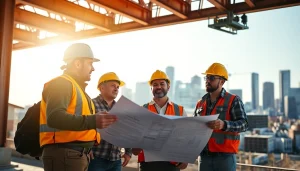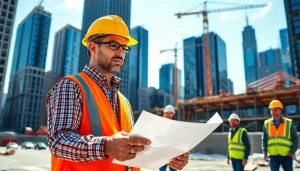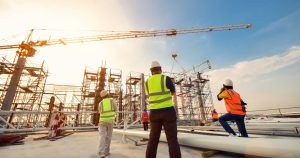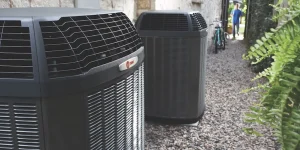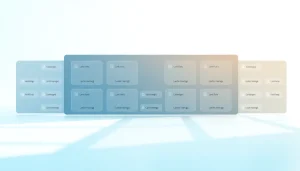Mastering Steel Structure Design: Techniques for Optimal Durability and Aesthetics

Understanding Steel Structure Design
The landscape of modern construction increasingly relies on materials that balance strength, aesthetics, and sustainability. At the forefront of this evolution is the steel structure design, which offers unparalleled advantages in building durability and versatility. This article delves into the essential concepts, components, and future trends of steel structure design, aiming to provide a comprehensive understanding for architects, engineers, and builders alike.
What is Steel Structure Design?
Steel structure design involves the creation of buildings and structures that predominantly utilize steel as the main material. This approach is renowned for its ability to withstand heavy loads and resist various environmental stresses, such as wind, earthquakes, and corrosion. Steel structures can be categorized into several forms, including beams, columns, and trusses, each contributing to a building’s stability and architectural form. The design process entails meticulous calculations for load analysis, material selection, and consideration of local building codes and regulations.
Key Benefits of Using Steel in Construction
The adoption of steel in construction comes with numerous advantages:
- Strength-to-Weight Ratio: Steel’s unique strength allows for lighter structures without compromising stability.
- Durability: Steel is resistant to various environmental conditions, making it ideal for long-lasting constructions.
- Flexibility: Architects appreciate steel for its malleability, allowing for vivid designs and expansive spaces.
- Speed of Construction: Pre-fabrication of steel components off-site can significantly shorten construction timelines.
- Sustainability: Steel is 100% recyclable, which aligns with green building initiatives.
Common Applications of Steel Structures
Steel structures have a broad range of applications, including:
- Commercial Buildings: High-rises and office complexes utilize steel frameworks for their skyscraper designs.
- Industrial Facilities: Factories and warehouses benefit from the expansive space offered by steel structures.
- Bridges: Steel’s durability and flexibility make it a primary choice for spanning large distances.
- Residential Homes: Increasingly, steel is being used in modern home designs for its unique aesthetic qualities.
- Sports Facilities: Stadiums often employ large steel trusses for their roofs and structures.
Fundamental Components of Steel Structures
Main Types of Steel Structures
Steel structures are categorized based on their design and purpose, including:
- Frame Structures: Comprising vertical columns and horizontal beams, these structures provide a robust layout ideal for multi-story buildings.
- Truss Structures: Utilizing triangular configurations, trusses spread loads across a wider area, making them suitable for roofs and bridges.
- Shell Structures: Thin steel plates are shaped into shells to create efficient, lightweight forms that require minimal material.
- Pre-Engineered Buildings (PEBs): These buildings are designed for specific applications and are fabricated with standardized components for expedited assembly.
Critical Elements in Steel Structure Design
Effective steel structure design hinges on several critical elements:
- Load Considerations: Understanding the types of loads (dead, live, wind, seismic) impacting a structure is vital for its integrity.
- Connection Design: The way steel components connect affects the overall performance and load transfer. Proper connection design is crucial to ensure stability.
- Stability Analysis: Designers must evaluate both lateral and structural stability to prevent failure.
- Deflection Limits: Managing deflection is essential in maintaining aesthetic and functional standards in design.
Material Selection and Properties
Choosing the right type of steel is foundational in the design process. Various grades of steel, such as mild, carbon, and alloy steels, possess different properties making them suitable for particular applications. Factors such as yield strength, ductility, and corrosion resistance must be weighed. The environmental conditions, potential exposure to chemicals, and the lifecycle of the building also dictate the selection of coatings or treatments to enhance steel longevity.
Design Principles and Best Practices
Core Principles of Steel Structure Design
Designing a steel structure necessitates adherence to fundamental principles:
- Safety First: The primary goal is to ensure that structures can endure expected loads and adverse conditions.
- Economy of Materials: Efficient use of materials not only reduces costs but also minimizes waste.
- Aesthetic Considerations: Architectural beauty is enhanced through thoughtful integration of functional and aesthetic elements.
- Regulatory Compliance: All designs must comply with local codes and standards, considering safety, health, and welfare.
Innovative Design Techniques
Innovation propels the field of steel structure design. Modern techniques such as Building Information Modeling (BIM) enable integrative approaches that account for every aspect of the construction process, from design to execution. Advanced analysis methods, including finite element analysis (FEA), allow engineers to simulate stress responses in real-time, providing insights into potential points of failure. Emerging technologies like 3D printing are beginning to transform the fabrication process of steel components, creating more intricate designs with less material waste.
Case Studies: Successful Steel Structure Designs
Real-world examples illustrate the impacts of effective steel structure design:
One iconic example is the Burj Khalifa in Dubai, which utilizes a bundled tube structure. This design has helped it withstand significant wind loads while maintaining a slender profile. A more localized example is the construction of the new Boston Garden, which used a steel framework that allowed for a large, column-free space, enhancing visibility and comfort for spectators.
Challenges in Steel Structure Design
Common Technical Challenges
Despite the advantages, steel structure design also encounters challenges. Technical issues such as buckling, fatigue, and corrosion can compromise integrity. Engineers must plan for these factors during the design phase, employing strategies such as proper bracing to enhance stability and selecting materials suited for specific environmental conditions.
Addressing Environmental Factors
Environmental factors can pose significant threats to the longevity of steel structures. Corrosive environments necessitate protective coatings or the use of weathering steel, designed to minimize corrosion. Additionally, seismic considerations require strategic design adaptations to ensure buildings can withstand tectonic forces.
Mitigating Cost Overruns and Delays
Construction projects can face budget issues due to various reasons, ranging from miscalculations to unforeseen complications. To mitigate these risks, comprehensive planning, risk management strategies, and contingency budgets are vital. Implementing lean construction principles can also streamline processes, reducing waste and ensuring on-time completion.
Future Trends in Steel Structure Design
Emerging Technologies in Steel Construction
As the construction industry evolves, new technologies are changing the landscape of steel structure design. Robotics and automation are expected to play vital roles in fabrication processes, increasing precision and reducing labor costs. Furthermore, augmented reality (AR) and virtual reality (VR) are being utilized for project visualization and training, enhancing understanding and stakeholder engagement.
Sustainability in Steel Structures
With growing emphasis on sustainability, the steel industry is advancing methods to reduce environmental impact. Recycled steel is increasingly used in construction, and new technologies are emerging to produce steel more sustainably. Implementing energy-efficient systems within steel structures can also contribute to lowering overall carbon footprints.
Adapting to Modern Architectural Trends
Architectural trends often dictate the direction of structural design. Current trends emphasize green building principles, smart technologies, and adaptability. Steel structures can integrate renewable energy systems, such as solar panels and green roofs, to meet these contemporary demands while maintaining structural integrity and aesthetics.
